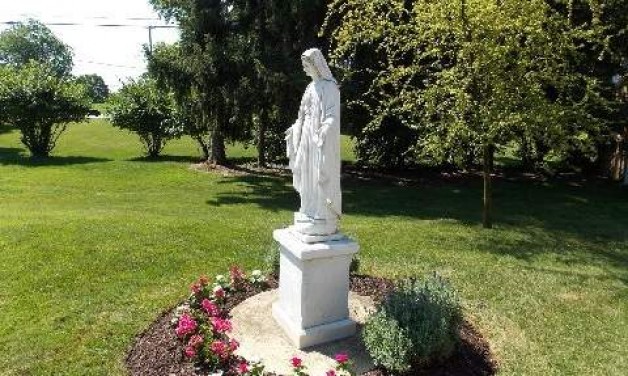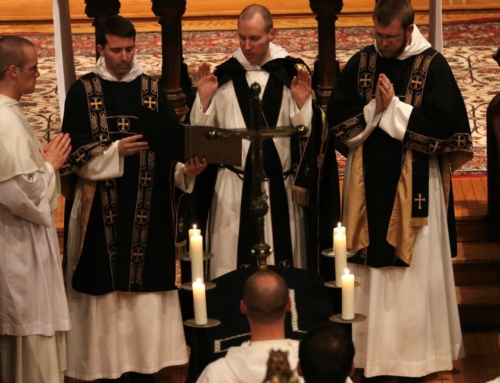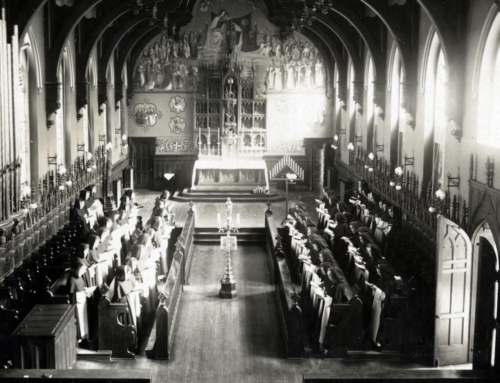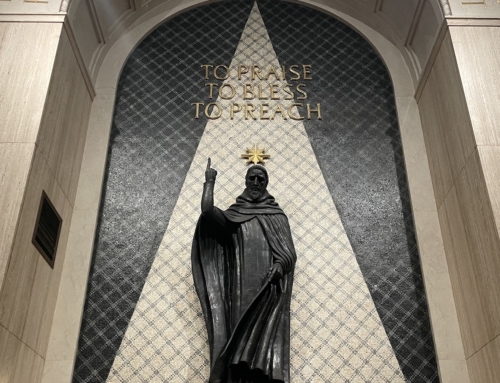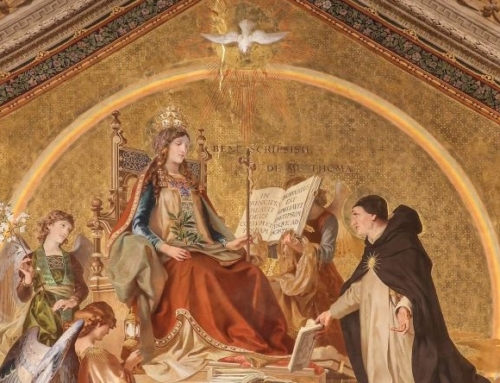Midway between Philadelphia and Harrisburg, Pennsylvania, lies the city of Lancaster. In addition to being the capital of the nation for a day and the capital of Pennsylvania for thirteen years, it is also the location of the only monastery of Dominican nuns in the state. While the former glories are both at least two centuries past, the latter continues to this day in the nine women who have dedicated their lives to God through the way of life inspired by St. Dominic over eight centuries ago.
From the very beginning, the friars of the Order of Preachers have been blessed by the association of contemplative nuns. Many of the Dominican monasteries in the United States, namely those that are called perpetual rosary monasteries, find the origin of their particular focus on praying the rosary in the work of Fr. Damien Marie Saintourens, O.P., a French Dominican friar. Fr. Damien Marie founded the first perpetual rosary monastery in 1880 in France and helped to found the first perpetual rosary monastery in the United States in 1891 at Union City, New Jersey.
The number of perpetual rosary monasteries soon multiplied, with the monastery in Lancaster being founded from the now-closed monastery that was in Catonsville, Maryland. What became the Lancaster community was started in a remote area in South Enola, Pennsylvania, in 1925; because of the anti-Catholic sentiment present there at the time, the Knights of Columbus would keep watch at night with rifles to protect the nuns. Because of the difficulties of that location, the nuns built a monastery in Lancaster in 1953, where they still reside today.
Their perpetual rosary identity continues to be very important for the nuns in Lancaster. Though there are presently not enough sisters to make the rosary perpetual, each sister has an individual hour of time to pray the rosary each day as well as five decades that the community prays together. They have also recently published the notebooks of Fr. Damien Marie, who, after founding the monastery at Union City, spent the rest of his life in the United States and Canada promoting devotion to the rosary and founding and supporting perpetual rosary monasteries.
While the sisters are small in number for the time being, they have faithfully maintained their beautiful way of life, which consists of the vows (poverty, chastity, and obedience), liturgical prayer, private prayer, withdrawal from the world, study, work, common life, and recreation. Throughout their history, they have always been blessed to have a Dominican friar as their resident chaplain. Like many of the monasteries, the nuns in Lancaster also have an affiliated chapter of the Lay Fraternities of St. Dominic.
Through the transitional and sometimes tumultuous years that followed the Second Vatican Council, they have maintained both their faithfulness to the Church and many of the traditional observances of their monastic life—such as the grille, papal enclosure, and silence with reading during meals—while following the true spirit of the Council through the renewal of their constitutions, which united them with all Dominican nuns throughout the world under the leadership of the Master of the Order.
Though the most recent solemn profession at Lancaster was in 1999, the nuns have had a number of women since then who have shown interest in their life. The Lord said to his disciples, “The harvest is abundant but the laborers are few; so ask the master of the harvest to send out laborers for his harvest” (Mt 9:38). In this prayer, let us not forget an indispensable group of laborers for the Lord’s harvest: those who devote their lives to contemplative prayer on behalf of the Church and the world. We should also remember to ask these laborers for their prayers, through their prayer request form or enrollment in their Perpetual Prayer Society.
As we celebrate the season of Advent, we beg the Lord to come into our hearts and save us, just as he came into our world as its Savior in Bethlehem, so that we might be prepared for his second coming. As the Lord comes into our hearts, let us be open to the grace he has to offer us. For the younger women you know—or if you yourself are a younger woman—perhaps this grace is that of a vocation to Dominican contemplative life.
When the prioresses of the monasteries met with the Master of the Order just a few months ago in Virginia, I had the opportunity to meet Sr. Mary Veronica, the prioress of the monastery in Lancaster. I was struck by the warmth of her joy and the gratitude in her heart for the Lord’s abundant blessings on her community.
Many who have never been to a monastery might assume that monasteries are primarily marked by melancholy or boredom. In my four and a half years as a Dominican friar, I have had the opportunity to visit a number of our monasteries and meet the nuns, and the reality could hardly be further from that common misperception.
And how could it not? Such a close life with our Lord Jesus is bound to bring profound happiness: not the ephemeral and superficial happiness of the fleeting pleasures of this life, but the true and lasting happiness of a life lived with and for the One whose presence will be our only happiness for eternity, God Himself. May it please our Lord to call many to himself through the oasis of peace and prayer found in the monastic vocation, both at the Monastery of the Immaculate Heart of Mary in Lancaster and at monasteries throughout the world.
Find out more about the monastery at their website.
✠

